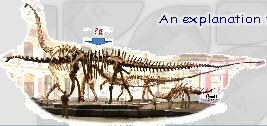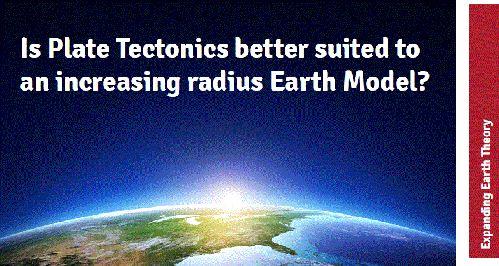


The Australian Institute of Geoscientists published an Earth expansion article by Dr James Maxlow, the Australian geologist, in December 2016.
The Australian Institute of Geoscientists (AIG) has members drawn from a wide range of geoscience fields, who represent the complete spectrum of geoscientists. The AIG are the only body that specifically represents all geoscientists in Australia. AIG News is their forum for articles about geoscience and is mailed to all members.
The Australian Institute of Geoscientists (AIG) has members drawn from a wide range of geoscience fields, who represent the complete spectrum of geoscientists. The AIG are the only body that specifically represents all geoscientists in Australia. AIG News is their forum for articles about geoscience and is mailed to all members.
“all remaining continental crusts unite precisely to form a single complete global Pangaean supercontinental crust”
Dr. Maxlow
Dr. Maxlow
Share this page
The article about Earth expansion, Is Plate Tectonics better suited to an increasing radius Earth Model? was in the December 2016 edition of the AIG News on pages 39 to 43. This edition of the AIG News can be freely downloaded from their website.
Maxlow’s article starts by reminding his geological colleagues that today’s Plate Tectonic theory is based on “its implicit assumption of a Constant radius Earth”. He then presents his own modelling studies that allow the Earth’s radius to be smaller in the past.
What is clear from these studies is that on a smaller diameter ancient Earth “all remaining continental crusts unite precisely to form a single complete global Pangaean supercontinental crust”.
Maxlow is able to highlight that his model studies show
Maxlow’s article starts by reminding his geological colleagues that today’s Plate Tectonic theory is based on “its implicit assumption of a Constant radius Earth”. He then presents his own modelling studies that allow the Earth’s radius to be smaller in the past.
What is clear from these studies is that on a smaller diameter ancient Earth “all remaining continental crusts unite precisely to form a single complete global Pangaean supercontinental crust”.
Maxlow is able to highlight that his model studies show
“ • Formation of the ancient supercontinents and breakup to form the modern continents as well as sympathetic opening of each of the modern oceans is shown to be predictive, progressive, and evolutionary.
• All diametrically opposed ancient magnetic north and south poles are precisely located using published palaeopole data.
• Established poles and equator coincide fully with observed climate zonation and plant and animal species development.
• Coastal geography defines the presence of more restricted continental Panthalassa, Iapetus, and Tethys Seas, which represent precursors to the modern Pacific and Atlantic Oceans and emergent Eurasian continents respectively.
• Plant and animal species evolution is intimately related to supercontinental development, the distribution of ancient continental seas, and changes to climate zonation.
• Extinction events are primarily related to and coincide with a number of drastic and prolonged changes to sea-levels.
• The spatial and temporal distribution of metals across adjoining continents and crustal regimes enables mineral search and genetic relationships to be extended beyond their known type localities.
• The presence of fossil fuels highlights the global interrelationships of resources coinciding with the distribution of a network of Palaeozoic continental seas and low-lying terrestrial environments.”
• All diametrically opposed ancient magnetic north and south poles are precisely located using published palaeopole data.
• Established poles and equator coincide fully with observed climate zonation and plant and animal species development.
• Coastal geography defines the presence of more restricted continental Panthalassa, Iapetus, and Tethys Seas, which represent precursors to the modern Pacific and Atlantic Oceans and emergent Eurasian continents respectively.
• Plant and animal species evolution is intimately related to supercontinental development, the distribution of ancient continental seas, and changes to climate zonation.
• Extinction events are primarily related to and coincide with a number of drastic and prolonged changes to sea-levels.
• The spatial and temporal distribution of metals across adjoining continents and crustal regimes enables mineral search and genetic relationships to be extended beyond their known type localities.
• The presence of fossil fuels highlights the global interrelationships of resources coinciding with the distribution of a network of Palaeozoic continental seas and low-lying terrestrial environments.”
Having given us this seemingly overwhelming evidence in support of expansion, Maxlow then addresses the “fundamental problem that scientists and the general public have” with Earth expansion. Where did the extra mass come from?
There are at least half a dozen working hypotheses at the moment but Maxlow’s preferred solution is provided by “charged solar wind-related particles emanating from the Sun”. Data about this has only recently become available but Maxlow judges that this “new space-based observational data subsequently collected has highlighted the introduction of large quantities of solar wind-related electrons and protons into the Earth, propelled by the Earth’s magnetic field. This influx begs the question as to what is happening to these particles—the building blocks of all matter on Earth—once they enter the Earth?”
It’s a good question and any reasonable person would conclude that this mechanism must increase the mass of the Earth, just as the Earth expansion theory predicts.
There are at least half a dozen working hypotheses at the moment but Maxlow’s preferred solution is provided by “charged solar wind-related particles emanating from the Sun”. Data about this has only recently become available but Maxlow judges that this “new space-based observational data subsequently collected has highlighted the introduction of large quantities of solar wind-related electrons and protons into the Earth, propelled by the Earth’s magnetic field. This influx begs the question as to what is happening to these particles—the building blocks of all matter on Earth—once they enter the Earth?”
It’s a good question and any reasonable person would conclude that this mechanism must increase the mass of the Earth, just as the Earth expansion theory predicts.
Comment on this page
Related Pages
The Predictability of Expansion Tectonics
The Mystery of Obscure Dinosaur Migration Routes
The Geological Society publishes Earth expansion paper
An index of Interesting Publications
Latest News Comments and Updates
Main Evidence for the Expanding Earth theory
A Brief History of the Expanding Earth theory
The Mystery of Obscure Dinosaur Migration Routes
The Geological Society publishes Earth expansion paper
An index of Interesting Publications
Latest News Comments and Updates
Main Evidence for the Expanding Earth theory
A Brief History of the Expanding Earth theory
References
Maxlow, J. (2016). Is Plate Tectonics better suited to an increasing radius Earth Model? December 2016 edition of AIG News. pp 39-43.
Free pdf of AIG News
Maxlow, J. (2016). Modelling Modern Global Geodata on the Ancient Earth. Free pdf
Maxlow, J. (2014). On the Origin of Continents and Oceans: A Paradigm Shift in Understanding
Book details Review (pdf)
See James Maxlow’s web site for additional reconstructions
http://www.expansiontectonics.com/index1.html
Free pdf of AIG News
Maxlow, J. (2016). Modelling Modern Global Geodata on the Ancient Earth. Free pdf
Maxlow, J. (2014). On the Origin of Continents and Oceans: A Paradigm Shift in Understanding
Book details Review (pdf)
See James Maxlow’s web site for additional reconstructions
http://www.expansiontectonics.com/index1.html
Page first created 09 Jan 17
Page last updated 21 Aug 18
Page last updated 21 Aug 18
The article about Earth expansion can be freely downloaded from the Australian Institute of Geoscientists website





